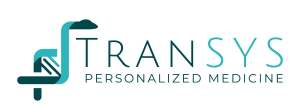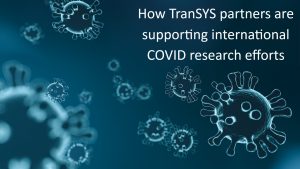
The TranSYS training network represents complementary sciences covering risk profiling, diagnostics, drug discovery, clinical trials, data science, including AI. Our consortium members are combating the COVID-19 crisis in the following initiatives.
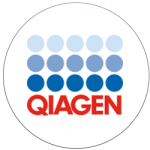 Free QIAGEN Bioinformatics resources (IPA and CLC)
Free QIAGEN Bioinformatics resources (IPA and CLC)
QIAGEN Digital Insights is offering free ‘COVID-19 emergency response licenses’ for QIAGEN CLC Genomics ProSuite and a free temporary license of QIAGEN IPA to qualifying laboratories globally involved in the COVID-19 research and pandemic response. Also, the new Coronavirus Network Explorer helps you visualize how SARS-CoV-2 proteins interact with human host proteins to disable protective responses and pathways, and explore hypotheses around how to fight coronavirus. As an additional resource, QIAGEN Digital Insights will be hosting training webinars and tutorials specifically to address the bioinformatics needs of the community. For more information visit: https://go.qiagen.com/QDI-COVID19
 SHIVOM offer free resources to COVID researchers
SHIVOM offer free resources to COVID researchers
SHIVOM have added a special part to their platform that helps researchers share COVID-19 data (virus and host genetic data) and analyze datasets with specific sets of bioinformatics pipelines. Users are able to gain easy access to genomic data and the ability to run various bioinformatics & AI tools in one environment. This service, along with a ‘how to’ webinar is available to all researchers for free.
For more information visit: https://www.shivom.io/webinar-analysing-covid-19/
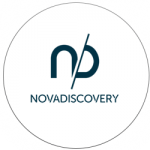 Acceleration of clinical trials simulation: Novadiscovery
Acceleration of clinical trials simulation: Novadiscovery
COVID-19 pandemic poses many problems. Beyond the strain it puts on healthcare systems globally, research for a vaccine and a treatment has become a top priority. These efforts come with a series of difficulties that the prevailing drug R&D paradigm are not optimally suited to address.
Which drug to develop among the 100 or so drugs available that could interact with the virus? How to accelerate the clinical development of the selected molecules? Which combinations are the most promising? How to accelerate the development of a vaccine?
A mathematical model of COVID-19 disease, integrating the virus, its target cells, the organs involved, the individuals and the population in which they have social interactions would help answer these questions. Novadiscovery, a company based in Lyon/France, has developed over the past decade a technology platform based on knowledge and not data (too little data available) to build this model in a few months.”
Data, from in vitro and in vivo (omics, epidemiology and/or clinical trials) are welcome for model calibration and validation.
More information here: https://www.linkedin.com/pulse/covid-19-its-time-accelerate-adoption-clinical-trials-boissel/?trackingId=Hz6TxXYURHqmWTVNov7swg%3D%3D
 Drug repurposing study at the BIO3 group (KU Leuven/ULiège)
Drug repurposing study at the BIO3 group (KU Leuven/ULiège)
The outbreak of coronavirus disease 2019 caused by the SARS-CoV-2 is creating a serious threat to global public health. There is an immediate need for effective treatment. To treat this deadly disease it is recommended to use existing, approved therapies with proven safety measures to reduce the rising mortality.
In this direction, KU Leuven are using the publicly available data (COvid 19 target genes) and databases (For chemical-chemical and Chemical-protein interactions) to repurpose the drugs against corona.
The ongoing drug-repurposing study is based on the fact that the interacting compounds often share similar functions thus implicating that interactive compounds of known drugs for COVID-19 (having potential antiviral activity against related viruses) may also have the capability to treat COVID-19. Hydroxychloroquine (HCQ) and chloroquine (CQ) are two generic drugs, that have demonstrated antiviral activity against SARS-CoV-2 in vitro and in a few small clinical trials. Known chemical-chemical interactions of HCQ and CQ are being used to extract interactive compounds that can have “anti-SARS-CoV-2” properties. The likelihood of these drug compounds able to treat corona disease is being calculated using chemical-protein interactions between the interactive compounds and COVID-19 target genes. Unsupervised machine learning-based analysis of candidate drug compounds based on druglike nature properties, ADME parameters, physicochemical and pharmacokinetic descriptors are carried out to propose alternatives to the two “reference” drugs.
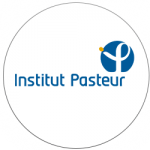 The Systems Biology Group at Institut Pasteur studies the conditions for the onset of severe forms of COVID-19
The Systems Biology Group at Institut Pasteur studies the conditions for the onset of severe forms of COVID-19
Using state-of-the-art sequencing and bioinformatics techniques, scientists from the Institut Pasteur, working with fellow scientists from Israel and China, determined that patients with severe forms of COVID-19 presented an abnormal, ineffective lymphocyte response and a massive infiltration of inflammatory cells in the lungs.
Patients with COVID-19 (see the COVID-19 fact sheet) present a wide variety of clinical forms, ranging from mild cases to respiratory distress syndromes requiring respiratory assistance. While various factors such as age, sex and weight have been identified as being associated with severe forms, little is yet known about the biological mechanisms involved in the aggravation of the disease.
In a paper published in the prestigious journal Cell, the Institut Pasteur’s Systems Biology Group, in collaboration with the Weizmann Institute (Israel) and the Third People’s Hospital of Shenzhen (China), studied the immune response at work in the lungs of patients with moderate and severe forms of COVID-19.
Using state-of-the-art sequencing and bioinformatics techniques, the scientists determined that severe patients presented an abnormal, ineffective lymphocyte response and a massive infiltration of inflammatory cells in the lungs.
A new bioinformatics approach also enabled them to identify precisely which cells were infected by the SARS-CoV-2 virus, responsible for COVID-19, and to highlight the possibility of co-infection with another respiratory virus, human metapneumovirus, which appears to significantly impair the antiviral response.
The research was supported by the LabEx IBEID.
Source: Host-Viral Infection Maps Reveal Signatures of Severe COVID-19 Patients, Cell, May 7, 2020
Pierre Bost,1,2,3,6 Amir Giladi,1,6 Yang Liu,4,6 Yanis Bendjelal,2 Gang Xu,4 Eyal David,1 Ronnie Blecher-Gonen,1 Merav Cohen,1 Chiara Medaglia,1 Hanjie Li,1 Aleksandra Deczkowska,1 Shuye Zhang,5 Benno Schwikowski,2,*Zheng Zhang,4,* and Ido Amit1,7,*
1 Department of Immunology, Weizmann Institute of Science, Rehovot, Israel
2 Systems Biology Group, Department of Computational Biology and USR 3756, Institut Pasteur and CNRS, Paris 75015, France
3 Sorbonne University, Complexity of the Living Organism, Paris 75005, France
4 Institute for Hepatology, National Clinical Research Center for Infectious Disease, Shenzhen Third People’s Hospital, School of Medicine, Southern University of Science and Technology, Shenzhen 518112, Guangdong Province, China
5 Shanghai Public Health Clinical Center and Institute of Biomedical Sciences, Fudan University, Shanghai 201508, China
6 These authors contributed equally
7 Lead Contact
*Correspondence: benno@pasteur.fr (B.S.), zhangzheng1975@aliyun.com (Z.Z.), ido.amit@weizmann.ac.il (I.A.)
